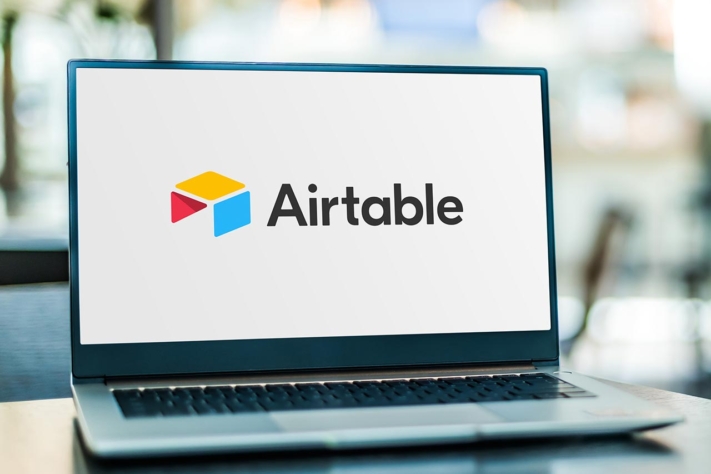Why do you need a project management tool for HR? HR management has long since ceased to consist solely of repetitive, clearly defined tasks. Areas such as applicant management or personnel development demand new processes, optimizations and changes. These goals are pursued in the form of short- or mostly long-term projects. Read how a simple project management tool can relieve the burden on your HR department.
Human resource management: special features and daily tasks
Let's start with a look at the specifics of human resource management.
Human resources management tasks include:
- Personnel planning
- Recruitment
- Staff deployment
- Remuneration management
- Personnel controlling
- Human resources development
It includes all activities related to the planning, development, administration and management of personnel. In addition to everyday organisational tasks, there are also long-term projects, often in cooperation with other departments.
Projects in human resources management
- affect many to all employees,
- are subject to strict legal data protection requirements
- and strongly influence the organisation.
A project management tool therefore becomes necessary to keep track of and efficiently manage projects, no matter how complex. But how can a programme relieve the HR department?
How can a project management tool support human resource management?
One of the most important tasks of HR is applicant management. This includes a wide range of topics from branding the company, campaigns and job advertisements, coordination with the specialist departments to assessment centres and hiring or rejection. A company-wide onboarding process can also be a task of the HR department.
A project management tool helps to standardise all these processes. It enables the data to be processed in a structured way and kept in view.
Other projects may concern staff development. What should be done to train and develop individuals or groups of staff? In the project management tool you set milestones and check the progress of the project.
It also makes it easier to work together in cross-departmental teams. Example of the applicant process: Here, smooth cooperation is particularly important. While HR is more responsible for the organisational tasks and communication with the applicants, the individual departments have to assess what the professional qualifications are and whether the candidate is a good fit for the team. A tool provides everyone involved with an overview of all aspects and the progress of the selection process.
Read now how such a tool for HR could look like and what you should pay attention to.
What should you look for when choosing the right project management tool?
A key issue in human resource management is data protection. The project management tool should therefore offer functions that allow different or filtered views on data. For EU companies, directives such as the GDPR must be met. Their data should be stored on servers in the EU.
Furthermore, HR projects can quickly become complex as they involve many people and extend over a long period of time. Your project management tool must be able to map task relationships and timelines in this case.
Lastly, ease of induction is important. Human resources staff are not full-time project managers, they have to perform a variety of different tasks. A new project management tool should therefore be easy to use.
Let's take a look at six well-known project management programmes in comparison below.
What are the advantages and disadvantages of the different project management tools?
In the following, we present six programmes that can relieve your HR department. Let's start directly with the first project management tool.
#1 Airtable - More than Excel?
The project management tool Airtable advertises with spreadsheets and views like Excel. In addition, however, a database hangs in the background and Kanban boards are possible. This ultimately makes it interesting for project management, also in human resources.

Project Management Tool © monticellllo / adobe stock
Advantages
The advantages of Airtable are the flexible user interface and various filters that simplify the structuring of data.
Disadvantages
A cross-project overview is not possible. It is therefore less suitable for larger and complex projects. The data is hosted on servers in the USA, which makes it difficult to use for HR management.
Secondly, we come to a project management tool that is popular for task management both privately and by companies: Trello.
#2 Trello - Project management with Kanban boards.
Trello is the well-known Kanban-style list solution. Different cards can be moved back and forth on boards.
Advantages
This simple project management tool is particularly suitable for clear task management.
Disadvantages
Relationships between tasks cannot be shown. Timelines are also not possible. The programme is also run on an AWS (Amazon Web Service) platform in the USA, which prevents data-protected use in Europe.
Let's now talk about a project management tool that many see as an extension to Trello:
#3 Asana - Kanban boards and more
Asana also supports the Kanban project method. However, you can still implement additional functions here.

Project Management Tool © Tada Images / adobe stock
Advantages
Among the additional functions are, for example, a timeline and a portfolio. Both help to manage several initiatives at the same time. Asana is therefore better suited for more complex projects than Trello. The existing task dependency system also means a big advantage for human resource management. Finally, it is worth mentioning that Asana offers EU data centres as a storage location.
Disadvantages
The disadvantage of Asana is that the additional complexity entails a higher learning curve.
Speaking of complexity, let's take a look at the bedrock of project management tools.
#4 Jira - The comprehensive project management tool
Jira is one of the most widely used project management programmes. It is also used by many companies for bug management.
Advantages
With this tool, you plan with Kanban, Scrum, Gantt chart or to-do lists (tables are not possible). Comprehensive task management and milestones are also available. Jira, like Trello, belongs to Atlassian, but here you can choose where your data should be located. Data centres in Germany are available.
Disadvantages
The disadvantages of using Jira in project management lie in the complexity of the programme. It quickly becomes unwieldy and requires extensive training of the employees.
#5 ProofHub - Many useful functions for project management
ProofHub helps teams organise and track projects while collaborating in a simple and flexible way in one central location.
Advantages
A clear advantage is the quick and easy setup of ProofHub. This means that you and your team lose no time and can start immediately with your first projects. In addition, many useful functions and tools are offered, such as a task manager, a Gantt chart, calendar or note function, in order to be able to work as efficiently as possible in the team. ProofHub is also very reasonably priced. The project management software is available in two different versions, which differ in terms of the number of projects and storage space. Here, only a monthly flat rate is charged, regardless of how many people use it.
Disadvantages
In some places, the user interface could be a little more intuitive. In addition, the loading times are sometimes a little slow.
#6 SeaTable - The rather untypical project management tool
SeaTable offers a good compromise between ease of use and the functions covered. It works via flexible column types and enables agile project management.
Advantages
The programme offers both task management with a Kanban board and a timeline including a calendar. It is suitable for any type of project up to holiday planning or error management. Private views on data are possible. SeaTable has also switched from AWS to the Swiss provider Exoscale. Since then, their data is located in Europe.
Disadvantages
Projects can be managed in different ways. Not all possibilities are as complex with SeaTable as with Jira, for example.
Conclusion: Project management tools in human resource management
Project managementtools can simplify the work of human resource management and make it more efficient. Routine tasks are standardised. An overview of complex projects can be maintained. It is also worthwhile to consider rather untypical tools.
You have to weigh up how big your company is and what project sizes have to be expected due to the number of employees. Is a simple project management tool enough, do employees need to familiarise themselves with a complex variant or does a tool like SeaTable meet all requirements?
Feel free to test your use cases in our free version. Click here to register.
Image source Cover image: © Tada Images/Adobe Stock

